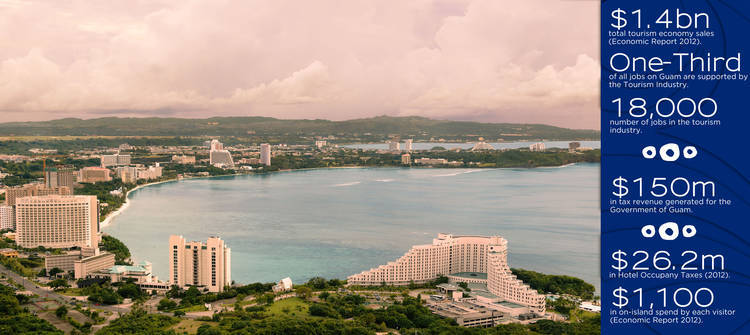About GVB

Mission
To efficiently and effectively promote and develop Guam as a safe and satisfying destination for visitors and to derive maximum benefits for the people of Guam.
History
Guam's development of tourism was first acknowledged by local government officials in 1952 with the enactment of Public Law 67. The law implemented a plan to establish a travel industry on Guam. The measure was passed by the First Guam Legislature and signed into law by then Governor Carlton Skinner. Unfortunately, the territory was blanketed with a security restriction on travel imposed by the formal naval administration. It was not until 1962, when President John F. Kennedy lifted the security restriction, that Guam's tourism development would move closer to realization.
In 1963, the Government of Guam established the Guam Tourist Commission within the Department of Commerce via Executive Order 63-10 which was issued by then Governor Manuel F.L. Guerrero. With an initial budget of $15,000, the Guam Tourist Commission immediately began aggressive travel trade promotions in Japan and Southeast Asia. Additionally, the Commission worked diligently on the development of Guam's tourism plan and lobbied air carriers to increase flight service to Guam from potential market areas.
The rewards of the Commission's efforts were reaped four years later, when on May 1, 1967, Pan American World Airways landed on Guam with 109 Japanese tourists. In that first year, Guam recorded 6,000 visitor arrivals.
In July 1970, the Guam Tourist Commission was renamed Guam Visitors Bureau. Separated from the Department of Commerce, Executive Order 70-24, formally established the Bureau as a nonprofit corporation, with 80% of its operational budget funded by the government and 20% from membership dues and in-kind contributions. In 1983, Public Law 17-32 (The Guam Visitors Bureau Act) was enacted, reorganizing the Bureau as a public, nonprofit, membership corporation.
Public Law 17-65 was passed in 1984, which established the Tourist Attraction Fund (TAF). Separate from the General Fund, the TAF was the source for the government's 80% share of the Bureau's budget. Funds in this account are derived from hotel occupancy taxes collected from room nights sold. The occupancy tax is currently assessed at 11 percent.
In 1990, Public Law 20-205 was passed and established a Research Department within the Bureau. The department is responsible for the collection, analysis and evaluation of data on the visitor industry. Additionally, the department serves as the industry source for dissemination of data.
As tourism provides over 50% to the Gross Island Product, the industry is considered to be the main economic contributor to Guam's economy. As the official marketing agency for the Government of Guam, the Bureau strives to promote and develop Guam as a viable destination overseas. Additionally, programs and activities also support the duration and awareness of the local community in regards to the importance of tourism.













